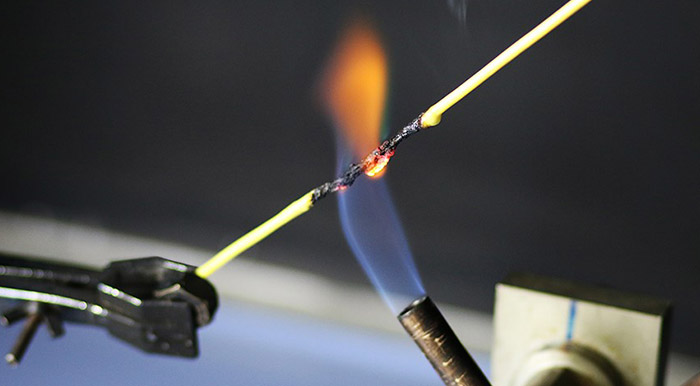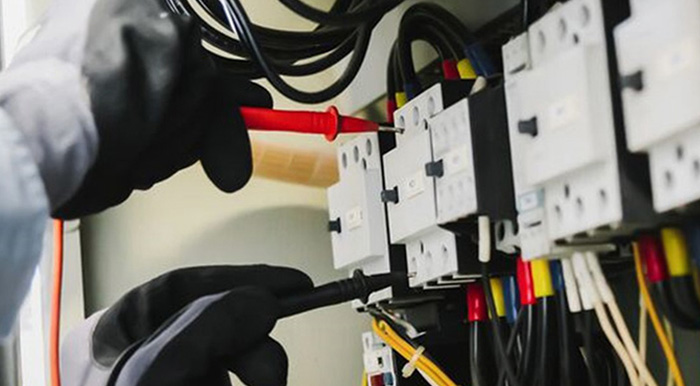RTCA DO-160 – Environmental conditions and test methods for aeronautical equipment
RTCA DO-160, published by the Radio Technical Commission for Aeronautics (RTCA), specifies minimum requirements for the protection of aeronautical electronics against environmental influences, including electromagnetic compatibility. The standard defines test methods and environmental requirements for the entire range of aeronautical devices – from light aircraft to supersonic aeroplanes – and, in the current version, includes 26 sections to ensure reliable function under real operating conditions.
Typical tests according to RTCA DO-160:
- Section 15: Magnetic Effect
- Section 16: Power Input
- Section 17: Voltage Spike
- Section 18: Audio Frequency Conducted Susceptibility – Power Inputs
- Section 19: Induced Signal Susceptibility
- Section 20: Radio Frequency Susceptibility (Radiated and Conducted)
- Section 21: Emission of Radio Frequency Energy
- Section 25: Electrostatic Discharge (ESD)
MIL-STD-461 – EMC requirements for military systems
MIL-STD-461 is a US military standard for ensuring the electromagnetic compatibility (EMC) of electronic and electrical devices. Since its introduction in 1967, it has defined mandatory requirements for interference emissions and immunity.
The standard is relevant for systems and equipment in the defense and aerospace sectors, which must function reliably under extreme environmental conditions. The test procedures described differ significantly in some cases and the requirements are considerably higher than the civilian standards.
Typical tests according to MIL-STD-461:
- CE101, CE102: Conducted emissions
- RE101, RE102: Radiated emissions
- CS101–CS118, RS101, RS103: Immunity
VG 95370/VG 95373
Similar to MIL-STD-461, there are the VG 95370 and VG 95373 series standards for the defense sector, which are to be applied to new systems and equipment to be developed, procured, and supplied by the German Armed Forces. However, measurement methods, limit values, and immunity levels differ from MIL-STD-461.
Shielding effectiveness standards
Shielding effectiveness of materials and enclosures according to:
- ASTM D 4935
- VG 95373-15
- IEEE Std 299 (formerly MIL-STD-285)
Learn more about shielding effectiveness measurement here.
EMC for medical devices – also for military environments
Medical devices must function reliably even under military operating conditions. IEC 60601-1-2 prescribes specific EMC tests and risk assessments for this purpose. Our expertise in medical technology is directly transferable to military scenarios.
Learn more about our services in the field of medical technology here.
SGS – your partner for EMC testing
Our accredited EMC laboratory offers, among other things, the following test facilities:
- 5 absorber chambers including a 10-meter chamber for test samples and vehicles up to 35 tons in total weight and 12 meters in length for emission measurements up to 40 GHz and immunity up to 600 V/m
- 3 shielded chambers
- Harmonics/flicker and voltage interruptions – 3-phase up to 75 A/phase
- Surge testing up to 10 kV/10 kA, including ITU-T (CCITT)
- Automotive transient pulse measurements
- ESD testing up to 30 kV
- Various test setups for high-voltage systems, including ISO/DTS 7637-4 and surge/burst on DC up to 1,000 V/100 A
- Power supply in the EMC lab up to 124 A/400 V
This allows testing of components, small devices, and equipment up to heavy machinery and vehicles.
Contact
Armin Hudetz
t: +49 89 787 475-133
E-mail: This email address is being protected from spambots. You need JavaScript enabled to view it.
Customer Service Team
t: +49 89 787 475-222
E-mail: This email address is being protected from spambots. You need JavaScript enabled to view it.







